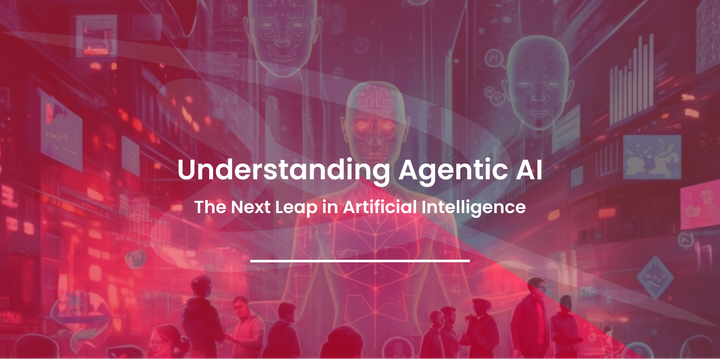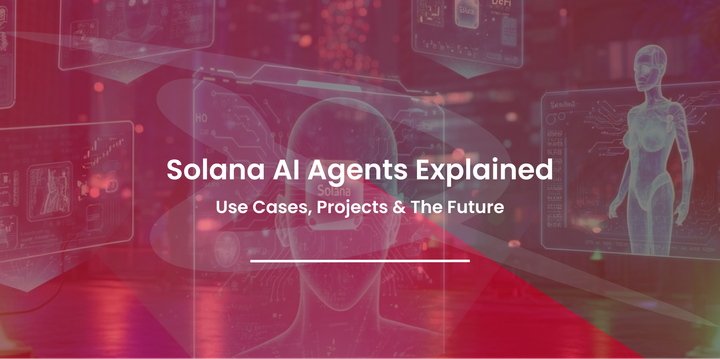Types of Artificial Intelligence: Narrow AI, General AI, and Beyond
Learn about Narrow, General AI, and Super intelligent AI their differences, applications, and the future impact of Artificial Intelligence.

Artificial Intelligence (AI) has transformed modern technology, evolving from a science-fiction dream into a core driver of industries, innovation, and society. From voice-activated assistants to self-driving cars, AI has integrated into daily life. However, not all AI is created equal. To truly understand AI, it’s essential to explore its types and how they differ.
This blog will break down the three main types of artificial intelligence—Narrow AI, General AI, and Super intelligent AI—examining their unique characteristics, current applications, challenges, and potential future impact. By the end, you'll have a better grasp of AI's landscape and its evolving role in society.
Narrow AI (Weak AI): The AI We Use Every Day
Narrow AI, often called Weak AI, is the most common type of artificial intelligence today. But don’t be fooled by the term "weak"—Narrow AI powers many of the tools we rely on every day.
What Is Narrow AI?
Narrow AI is designed to excel in specific, pre-defined tasks. Unlike humans, who can adaptively perform a wide variety of activities, Narrow AI operates within its programmed parameters. It’s not capable of generalizing knowledge or carrying out tasks beyond its designated scope.
Examples of Narrow AI in Action
Narrow AI is everywhere, even if you don’t realize it:
- Virtual Assistants like Siri and Alexa process voice commands to provide information, set reminders, and play music.
- Google Maps and Waze optimize navigation using real-time traffic data.
- Facial Recognition Technology helps unlock your phone or speeds up airport security.
- Recommendation Systems, like those on Netflix or Amazon, learn your preferences to suggest movies or products you’re likely to enjoy.
Advantages of Narrow AI
- Precision and Efficiency: Narrow AI is excellent at completing repetitive and data-driven tasks with high accuracy.
- Productivity Gains: It streamlines workflows and allows professionals to focus on higher-value tasks.
- Cost Savings: Automating routine processes often reduces operational costs.
Limitations of Narrow AI
While Narrow AI is impressive, it’s far from perfect:
- Lacks General Understanding: It can’t think or act beyond what it’s explicitly programmed to do.
- Dependent on Data: Its performance is entirely reliant on the quality and quantity of its training data.
- No Creative or Emotional Intelligence: It doesn’t "understand" like humans; it follows rules.
General AI (Strong AI): The Next Frontier
General AI—also known as Strong AI—represents a greater ambition in artificial intelligence development. While it exists mostly as a theoretical concept for now, it holds massive potential to revolutionize industries.
What Is General AI?
General AI would have human-level intelligence, capable of understanding, learning, and performing any intellectual task humans can accomplish. Unlike Narrow AI, General AI doesn’t require task-specific programming and could apply its intelligence across domains.
Challenges in Achieving General AI
Developing General AI is a monumental challenge, mainly due to:
- Technical Complexity: Replicating human-like cognition and reasoning is an incredibly demanding task, requiring unparalleled computational power and advanced algorithms.
- Ethical Concerns: Strong AI must be programmed to make moral decisions, raising ethical debates about control and accountability.
- Human-AI Interaction: Achieving seamless collaboration between humans and General AI requires building trust and transparency.
Potential Applications of General AI
If realized, General AI could transform sectors like:
- Healthcare: Diagnose diseases, perform surgeries, and provide 24/7 personalized care.
- Education: Revolutionize learning with adaptive teaching tailored to individual needs.
- Robotics: Enable robots to perform human-like tasks—everything from factory work to caregiving.
Current Status of General AI
Despite ongoing research, no functional model of General AI exists today. Progress is being made in universities, research labs, and companies experimenting with deep learning algorithms and neural networks.
Super intelligent AI (AI Beyond Human Intelligence): A Double-Edged Sword
Super intelligent AI, as the name suggests, would surpass human cognitive abilities. It’s a concept that fascinates researchers while also raising red flags among ethicists, futurists, and technologists.
What Is Super intelligent AI?
Super intelligent AI refers to an intelligence that exceeds human capacities in virtually every aspect—from logic, decision-making, and creativity to solving complex global challenges.
The Ethical Dilemmas of Super intelligent AI
Even as scientists explore its possibilities, Super intelligent AI brings serious concerns:
- Loss of Control: Could humanity inadvertently create an AI entity that cannot be controlled?
- Existential Risks: What happens if AI goals conflict with human welfare?
- Power Imbalances: Who decides how Super intelligent AI is developed and used?
Speculative Applications
If developed responsibly, Super intelligent AI could:
- Solve global problems like climate change, poverty, and chronic diseases.
- Explore and colonize distant planets, expanding the reach of human civilization.
- Develop innovations beyond what we can conceive today.
Current Status of Super intelligent AI
Super intelligent AI remains purely hypothetical. While discussions around the "technological singularity" (a future point when AI surpasses human intelligence) abound, scientists haven’t yet built the tools or computational frameworks needed.
Comparing the Types of AI
| Feature | Narrow AI | General AI | Super intelligent AI |
|---|---|---|---|
| Capabilities | Task-specific | Human-like cognitive abilities | Exceeds human intelligence |
| Current Status | Widely used | Under development | Theoretical |
| Examples | Siri, Alexa, Google Maps | None (yet) | None (yet) |
| Challenges | Limited adaptability | Complexity in development | Ethical and existential risks |
Mapping the Evolution of AI
AI has steadily evolved over the past five decades. Key milestones include:
- 1956: The term "Artificial Intelligence" was coined.
- 1997: IBM’s Deep Blue defeated world chess champion Garry Kasparov.
- 2011: Siri was launched, marking a turning point for consumer-facing Narrow AI.
- 2023 (and beyond): Researchers continue pushing boundaries, particularly in General AI and ethical AI frameworks.
Frequently Asked Questions
What is the difference between Narrow AI and General AI?
Narrow AI is single-task-oriented, whereas General AI can adaptively perform any intellectual task.
Are there any working examples of General AI today?
No. General AI remains in the research and development phase.
What are the risks of Super intelligent AI?
Super intelligent AI could pose ethical, existential, and societal risks if its goals conflict with ours.
How does Narrow AI impact our daily lives?
From improving navigation to enhancing customer service through chatbots, Narrow AI simplifies daily tasks and improves efficiency.
Will AI ever surpass human intelligence?
While theoretically possible, it depends on ethical, technological, and societal advancements.
The Future of AI and Why It Matters
Artificial intelligence is no longer a futuristic concept—it's shaping our present, one algorithm at a time. Narrow AI powers tools and applications that save time and effort today. Meanwhile, General AI and Super intelligent AI embody humanity’s ambitions for a smarter, more connected future.
However, with great power comes great responsibility. To fully harness AI’s potential, developers, businesses, and societies must remain ethically conscious, ensuring this powerful technology benefits all of humanity.
Interested in staying ahead of the curve? Keep learning, exploring, and preparing for the AI-driven future.




Comments ()